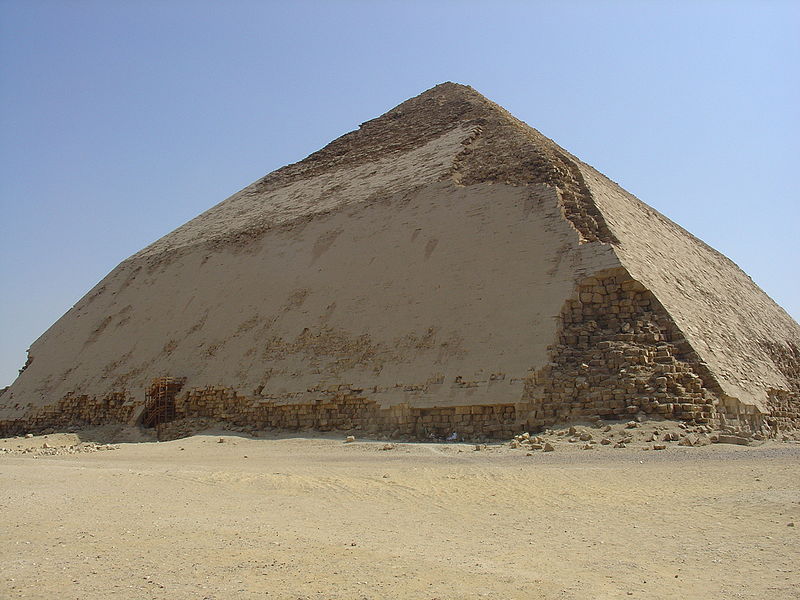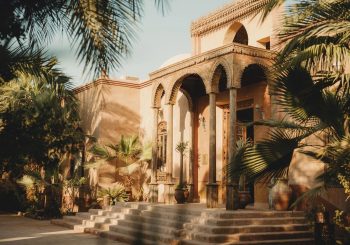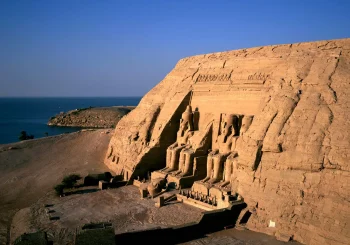While the Pyramids of Giza are iconic symbols of ancient Egypt’s grandeur, attracting crowds from all over the world, a collection of 118 equally marvelous pyramids remains in the shadows, out of the public eye, standing witness to a glorious past.
The historical significance, architectural allure, and mysterious stories behind these edifices have the potential to elevate their appeal to levels comparable to those of their better-known counterparts in Giza.
The curious bent pyramid in Dahshur stands as a testament to Old Kingdom Pharaoh Snefru’s ambition. From the innovative step pyramid designed for Third Dynasty ruler Djoser, which laid the foundation for pyramid architecture, to the enigmatic Meidum Pyramid, a rich chapter in Egypt’s history unfolds.
Here are eight Egyptian pyramids that deserve as much attention as the ones in Giza.
The Step Pyramid

At a height of 62.5 meters, Djoser’s Step Pyramid in Saqqara, Giza, was constructed in the early Third Dynasty, during the reign of King Netjerikhet, famously known as Djoser, around 2667 B.C.
Prior to the rule of Djoser, members of the upper echelons of ancient Egypt’s society were laid to rest in ‘mastabas.’ These structures, resembling benches, were usually rectangular and built above the actual burial site below the ground.
The Step Pyramid is made up of six stacked mastabas, creating its distinctive stepped appearance. Imhotep, the architect and King Djoser’s chancellor, is believed to have introduced this significant innovation.
The Pyramid of Unas

Pharaoh Unas, the final ruler of the Fifth Dynasty during the Old Kingdom (2575-2150 BC), commissioned the construction of this pyramid, which happens to be the smallest of all Old Kingdom pyramids.
Despite its size, it holds great significance as it contains the earliest known instance of funerary texts, called Pyramid Texts. These texts were inscribed on the walls of the burial chamber and served as guides for the deceased pharaoh’s journey to the afterlife by providing them with instructional spells.
Like most pyramids, the complex of the Unas pyramid includes two temples connected by a lengthy, elaborately decorated causeway. Although much of it has been taken away and repurposed by later rulers, a portion still exists, providing a glimpse into its original appearance.
The Bent Pyramid

The Bent Pyramid is the first of three pyramids commissioned by King Sneferu, the first ruler of the Fourth Dynasty. It owes its name to its altered lines, caused by a change in its angle during construction.
Originally, the pyramid was being built at a 55-degree angle, but it had to be adjusted to 43 degrees due to concerns about instability caused by too many blocks. In response, the king’s architects decided to create a new pyramid nearby, which became known as the Red Pyramid. The initial angle of the Bent Pyramid represents a transition between the Step-pyramid style of King Djoser in Saqqara and the later smooth-faced pyramids like the ones in Giza.
The Red Pyramid

Following the pyramids of Khufu and Khafre, the Red Pyramid is the third tallest pyramid in Egypt. It was among the three pyramids commissioned by King Sneferu of the Fourth Dynasty and stands as the tallest pyramid in Dahshur. The moniker comes from the reddish rusty hue of its stones.
The Red Pyramid, completed around the early 26th century B.C., marked the first successful attempt to build a true, smooth-faced pyramid, serving as a blueprint for the later Giza pyramids of the Fourth Dynasty.
The Meidum Pyramid

Meidum is a tower-shaped pyramid that once stood approximately 65 meters tall. Historians believe it was constructed by Fourth Dynasty ruler King Snefru. Some Egyptologists hypothesize that Snefru’s predecessor Huni may have supervised the initial phases of construction.
Meidum is the most mysterious of the major pyramids. In approximately 2575 B.C., when Snefru ascended to the throne, Djoser’s compound at Saqqara was the only completed large royal pyramid. However, Snefru went on to become an important pyramid constructor in Egyptian history, completing three pyramids: the Bent Pyramid, the Red Pyramid and the Meidum Pyramid.
Abusir Pyramids

About 4.5 kilometers south of Giza, the ancient area of Abusir is home to the tombs of Fifth Dynasty kings, including King Sahure, King Nefer-Air-Ka-Ra (Kakai), King Nefer-F-Ra, and King Nai-User-Ra’s pyramids.
Rulers of the Fifth Dynasty chose this area because the Giza Plateau was already occupied by massive pyramids built by Fourth Dynasty pharaohs. The area’s name, “Abu Seir,” originates from the ancient Egyptian term “Bir Ozir,” which translates to “the seat of the God Osiris.”
These pyramids were largely destroyed over the years since they were constructed using mud bricks.
The Black Pyramid

King Amenemhat III constructed the Black Pyramid during Egypt’s Middle Kingdom period. This pyramid is among the five remaining out of the original eleven at Dahshur in Giza, Egypt.
The name “Black Pyramid” originates from the color of the mudbrick core, which became visible due to the absence of casing blocks. However, in ancient times, the Egyptians named it “Amenemhat is Mighty and Perfect”, which took on an ironic twist as the structure began to deteriorate shortly after its construction.
Subscribe to the Egyptian Streets’ weekly newsletter! Catch up on the latest news, arts & culture headlines, exclusive features and more stories that matter, delivered straight to your inbox by clicking here.






Comments (2)
[…] post 7 Egyptian Pyramids That Deserve as Much Attention as Giza’s Great Three first appeared on Egyptian […]
[…] Source link […]